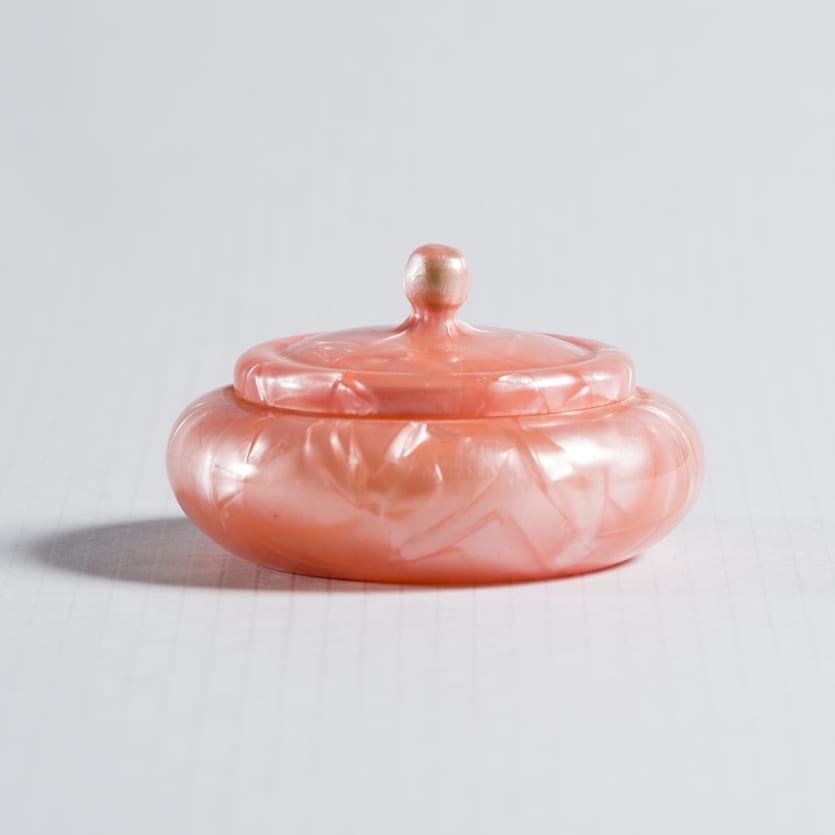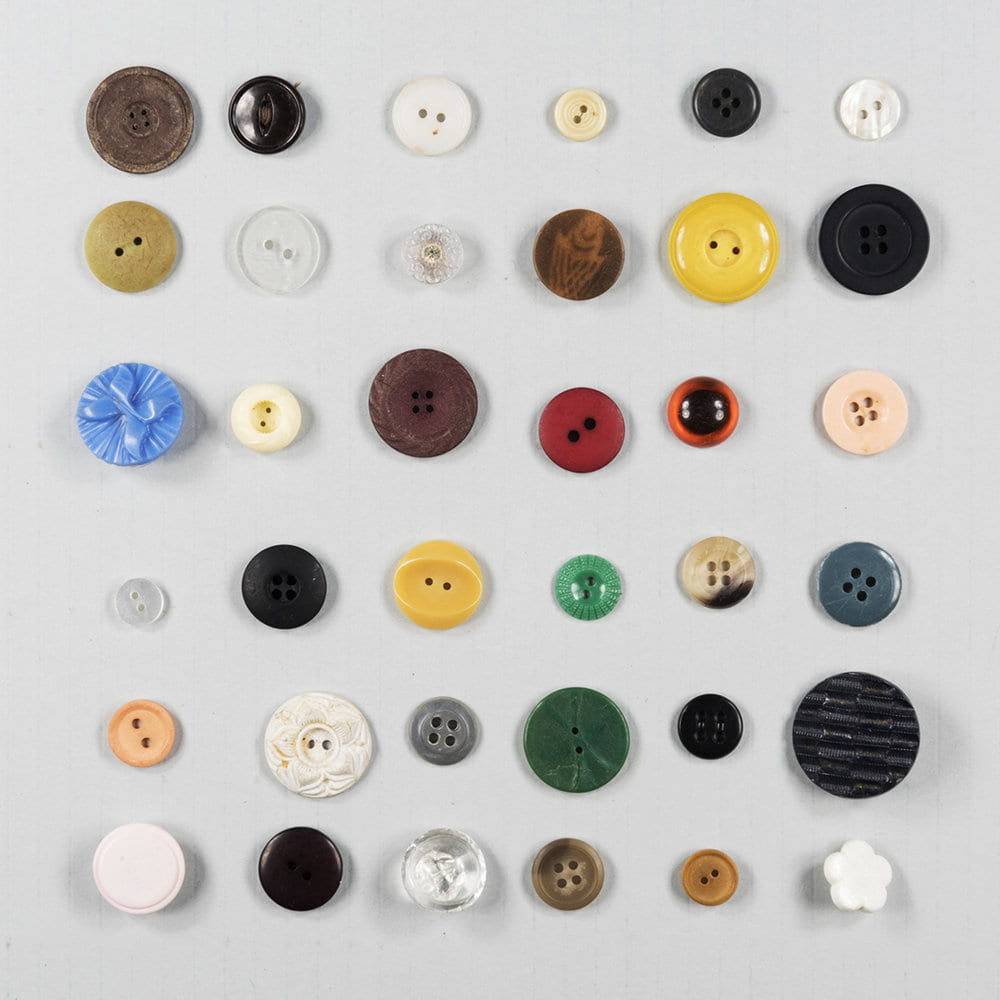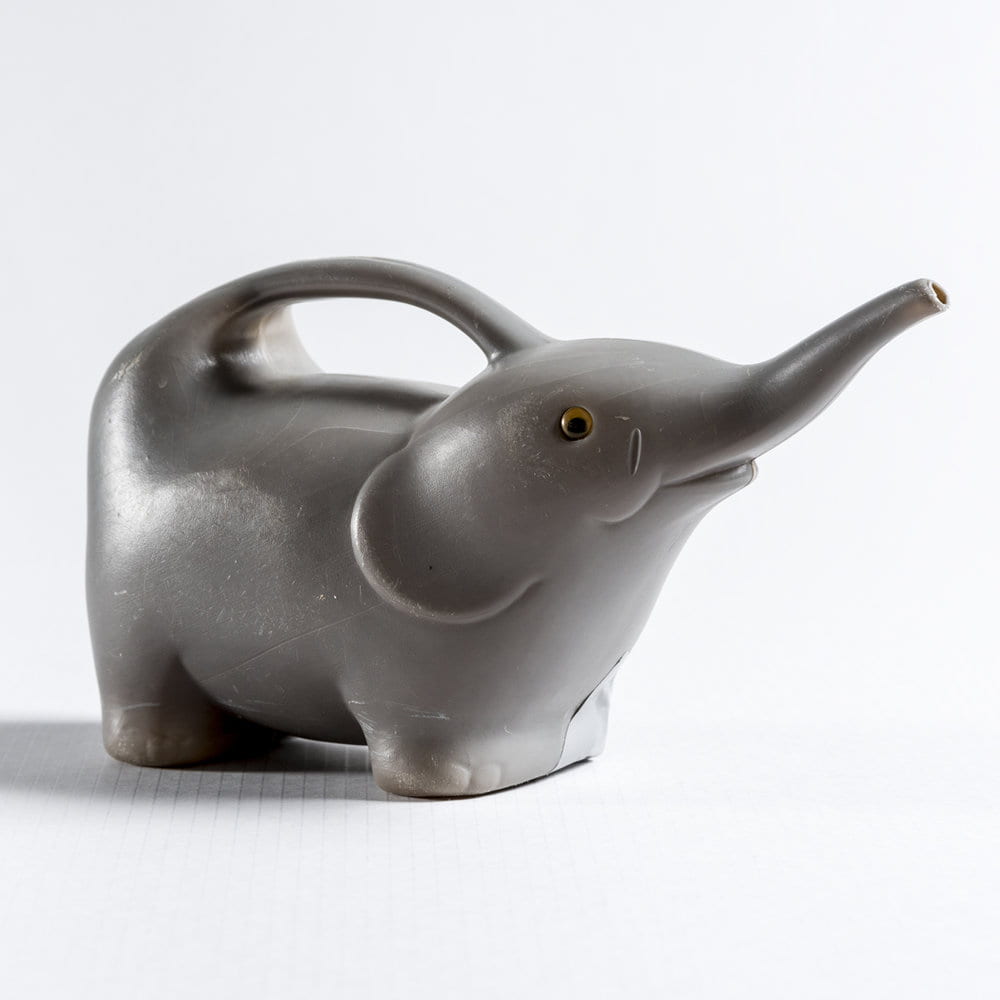
The PolyMuse Project
PolyMuse is one of the major research projects currently underway at the Grimwade Centre for Cultural Materials Conservation. The aim of the project is to develop suitable methods for conserving plastics (polymers) in collections across museums, galleries and even university archives. Of particular concern are the rapidly degrading and highly damaging plastics known as ‘malignant polymers’.
In this interview, Forum writer Samara Greenwood spoke with PolyMuse project lead Dr Petronella Nel about the project’s origins, goals, partners, and interesting outcomes to date.
First, could you provide a brief overview of the PolyMuse project?
We are aiming to develop methods for predicting and increasing the lifespan of malignant polymers, commonly known as plastics, in museum collections. We do this by investigating how to identify them, how they deteriorate and how to conserve them.
What are malignant polymers?
‘Malignant polymer’ is a term coined by the scientist Scott Williams at the Canadian Conservation Institute back in 2002. He did a lot of work on plastics and discovered there are five plastics that, as they degrade (more rapidly than other plastics), emit volatile compounds that can become corrosive and affect themselves and other materials surrounding them. These are cellulose nitrate (CN), cellulose acetate (CA), polyvinyl acetate (PVC), polyurethane (PU), and rubber. These rapidly degrading and damaging plastics are known as ‘malignant polymers’.
While it’s great to be able to identify these problematic plastics, you also need strategies for managing them. We ask questions like:
- How do you slow their degradation?
- How do you store them to slow their degradation and minimise the damage they cause?
- How do you separate malignant polymers from the rest of the collections?
For instance, with cellulose-based film, archivists desperately want to digitise their collections, but they must buy time because there is so much that needs to be copied. So, now they store them in fridges and freezers because cold temperatures slow those degradation processes.

How did the PolyMuse project come about?
It was a long and winding path, which is often the case with research projects.
Originally, I completed a PhD in chemistry. I then changed career and completed a Master’s in Cultural Materials Conservation at the Grimwade Centre. In my thesis, through a series of happenstance events, I ended up looking at how to identify adhesives used in the restoration of archaeological pottery.
In one of my tests, I obtained an unexpectedly positive response for the malignant polymer, cellulose nitrate (CN) in what is supposed to be a conservation grade adhesive composed of an acrylic. I enlisted the help of the CSIRO and we were ultimately able to prove that CN was present. After further research, I determined we need to continually monitor all conservation adhesives for potentially damaging polymers.
To continue working on this problem I applied for an Australian Research Council (ARC) Discovery Project (DP) grant, enlisting help from other experienced researchers (Robyn Sloggett [Conservation], Tony Sagona [Classics & Archaeology] and Deborah Lau [CSIRO]) as I had no track record to support the application. I was shocked but also delighted when we were successful.
For this project, we surveyed all the previously repaired artefacts in the Cypriot pottery collection housed at the Ian Potter Museum of Art. It was found two-thirds were repaired with adhesives composed of this damaging CN polymer, which only have a lifespan of six to 20 years. This means that in the near future these old repairs will need to be removed and replaced or the archaeological pottery will start to fall apart. In contrast, items repaired with conservation grade acrylic adhesives should remain intact for more than a hundred years.
While my initial research was on adhesives, I realised the use of cellulose nitrate, which has been around for more than 130 years, is pervasive throughout twentieth-century cultural heritage as part of objects, textiles, coatings, adhesives, photographic and cinematic film, support materials, and so on.
When the McCoy funding scheme became available to help facilitate collaborations between the University of Melbourne and Museums Victoria, I workshopped with the Museums Victoria conservation staff (now represented by Karina Palmer and Alice Cannon) four possible projects, one of which was on malignant plastics in their collections. When I asked the museum what their priority was, they said, “plastic degradation is the big problem we are worried about”.
A risk analysis conducted by Museums Victoria later determined that malignant polymers are indeed the most at-risk component of their collections. While the initial project focused on cellulose nitrate, from there we expanded to the whole problem of plastics in historical collections throughout Australia. Since then, we’ve brought together various partners on an ARC-LP (Linkage Project) grant to continue our work.
So, the project has developed in a circuitous way and has linked up all sorts of expertise that I had been developing, slowly but surely. Most importantly, the consultation with Museums Victoria was crucial in making the project meaningful to a broad collection of people and institutions.

What work has been done so far?
I now have five PhD students on the project, who apply a similar methodology to different collections. First, we survey/interview the conservation industry about the conservation of that type of object, for instance textiles. Then, we make sure we have a method for identifying the polymers, and a relevant reference polymer data set in place before assessing the collections. After that, we do accelerated aging experiments on the relevant polymers. We then use the aging results to help test conservation treatments to slow down the degradation process.
To bring all the research together, we are also building a database of our data using the OHRM (Online Heritage Resource Manager), in collaboration with Gavan McCarthy, a cultural informatics specialist who joined the project.
Because we’re getting large amounts of data from different researchers working from different collections at different museums, we need to ensure we have a centralised place where all the data can be kept in a consistent way that can be usefully compared. For example, if we wanted to know about dolls, we could use the database to see what is happening at different doll collections in different locations, or see which ones are made of a particular plastic.
Our first PhD student was Julianne Bell. She started in 2017 and is focusing on three dimensional objects. In 2018, three more students joined the PolyMuse project. Bronwyn Cosgrove was previously in charge of textiles at the National Gallery of Victoria and brings a lot of industry experience in her work on plastics and textiles. Cancy Chu is looking at plastics in paper-based archive collections and Sharon Wong is working on plastics in archeological collections. Sharon’s research entails both plastics dug up at archeological sites, such as toothbrushes, buttons, and beads, as well as the plastic bags these materials are often stored post-excavation. If those bags fall apart, archeological groupings are potentially lost. Our most recent student is Katrina Watson, who is focusing on potentially damaging materials (like plastics and metals) in camera collections.
Working together as a student research team has many benefits. They collaborate and support each other – otherwise a PhD can be a very lonely journey.

What other academics and partners have become involved in the project?
In terms of academics, Robyn Sloggett and I in Cultural Materials Conservation are joined by Andrew Jamieson from the Classics and Archeology program, who contributes to the archeological expertise, and Ken Ghiggino, former Head of the School of Chemistry and an international polymer specialist. From a heritage science perspective, we have Barbara Stuart from the University of Technology Sydney and Rachel Popelka-Filcoff who was at Flinders University and recently moved to a new role in archaeological science at the University of Melbourne: they both have extensive chemistry, archeology and forensic science experience.
I also knew the Australian Research Council was encouraging more of the GLAM (Galleries, Libraries, Archives and Museums) sector to be involved in research projects. This helped direct us to other museums who already have active research aspirations, including Queensland Museum (represented by Cathy ter Bogt). We also approached other significant museums and galleries, including the Museum of Applied Arts and Sciences–Powerhouse Museum in Sydney, the South Australia Museum, and the Art Gallery of New South Wales, currently represented by Brooke Randall, Fran Zilio and Sofia Lo Bianco respectively.
I previously collaborated with AGNSW to solve a problem with the frame of a painting that was oozing a green residue. We discovered this was due to a copper-based foil that had been adhered to the frame with cellulose nitrate. This is an example of adverse interactions that can occur between malignant polymers and materials like copper-based metals. Everything can look fine and then suddenly rapid degradation occurs.
New partners have joined the project such as: the University of Sydney represented by Elizabeth Carter, and the Australian National Maritime Museum (represented by Agata Rostek-Robak). Both discovered our work through a five-minute presentation I gave at the Australian Institute for the Conservation of Cultural Material National Conference (AICCM) in 2017.
We have found that everybody who gets involved in the PolyMuse project, even in small ways, is really interested, engaged and willing to go out of their way to help. We have been delightfully surprised by the generosity of our collaborators. They make sure all the resources are available to make the research happen, which is wonderful.
What are your future aims for the project?
One of our big aims is to launch the relational database so that it is publicly available. It can then be a resource for the whole of the museum sector to access. This is especially important for smaller museums that don’t have access to specialist equipment. They will be able to look up similar items, a particular doll for example, and identify the plastic it is likely to be made from based on our results. They can then see the recommendations for how it should be stored and managed.
We also hope the project will help people understand the history of plastics, their development over time and how pervasive they are in the manufacture of everyday objects. Plastics, particularly now, are demonised, but we hope this project will improve people’s understanding that they are an important part of the cultural record for the twentieth century.
More information on the PolyMuse project can be found on their website.
